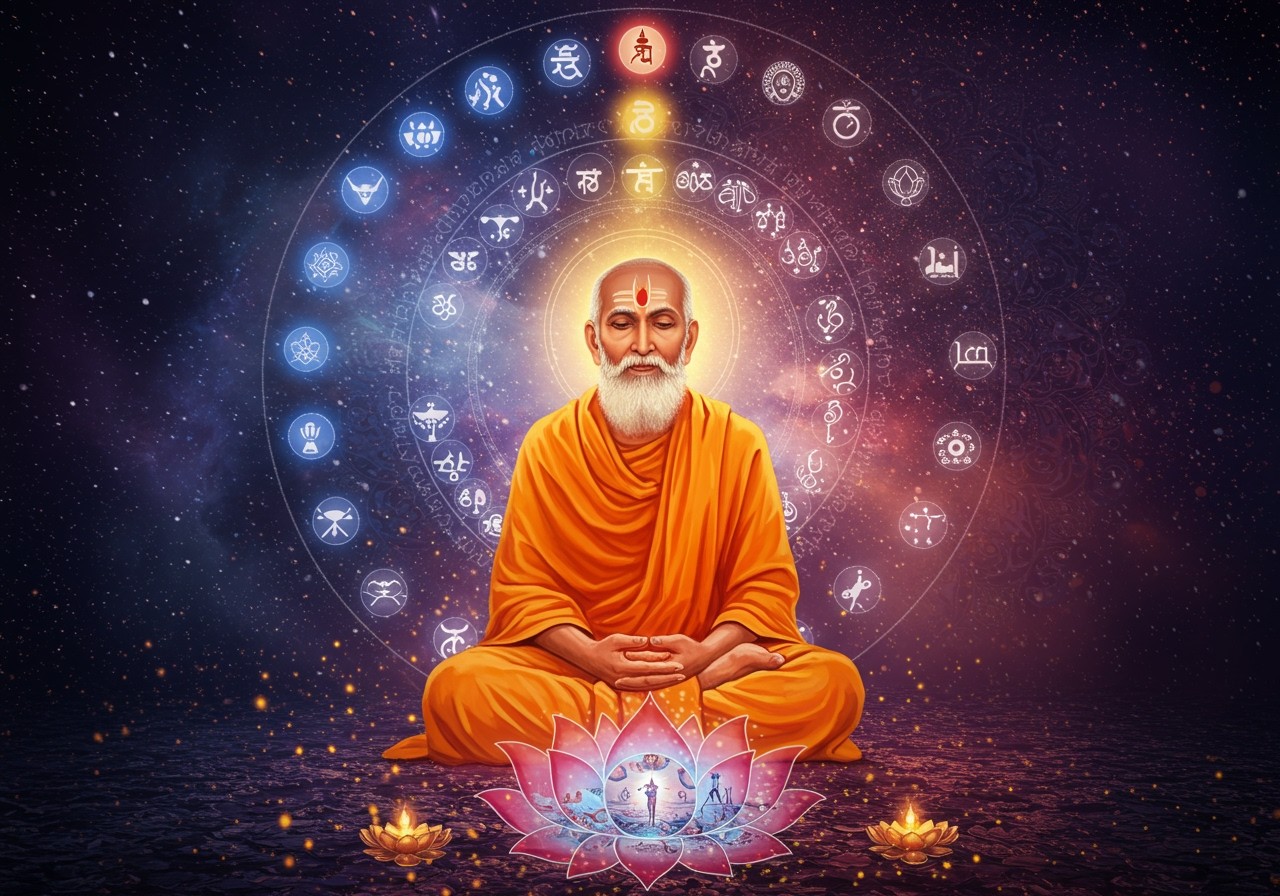
Samkhya philosophy, a cornerstone of Hindu tradition, presents a profound dualistic worldview. It emphasizes two fundamental realities: Purusha (pure consciousness) and Prakriti (the material world). Grasping these concepts is essential for understanding Samkhya’s significance in Indian philosophy and its influence on spiritual practices. Delve deeper into Hindu philosophy with our insightful guide: Hindu Philosophy Explained: A Beginner’s Guide.
The Core Dualism: Purusha and Prakriti
Samkhya philosophy revolves around the eternal interplay of Purusha and Prakriti. Purusha, the passive observer, embodies pure awareness, remaining unchanged and without attributes. In contrast, Prakriti is the dynamic force behind the material world, composed of three qualities known as Gunas. Liberation, according to Samkhya, arises when Purusha recognizes its inherent separation from Prakriti. The evolution of the material universe unfolds through the interaction of the Gunas within Prakriti. This dualism shapes our understanding of self and reality, distinguishing between consciousness and the material realm. Explore the diverse traditions of Hinduism across the globe: Hinduism’s Global Reach: A Look at Its Diverse Traditions.
Understanding the Gunas: Sattva, Rajas, and Tamas
The concept of Gunas is central to Samkhya philosophy. These three qualities—Sattva, Rajas, and Tamas—constitute Prakriti and shape the universe and our individual experiences. Gain a deeper understanding of Dharma and Karma within Hinduism: Dharma and Karma in Hinduism Explained.
Sattva: Harmony and Clarity
Sattva embodies balance, knowledge, and purity. It illuminates the mind, fostering wisdom and tranquility. When Sattva is dominant, individuals experience peace and deep understanding, leading to balanced thoughts and actions. A Sattvic individual often exhibits calmness and profound insight.
Rajas: Energy and Passion
Rajas represents energy, passion, and the driving force of change. While Rajas fuels motivation and action, an excess can lead to restlessness and agitation. A balanced Rajas propels individuals towards their goals while maintaining composure.
Tamas: Inertia and Ignorance
Tamas signifies darkness, ignorance, and inertia. It can cloud the mind, leading to lethargy and confusion. While Tamas is essential for rest, an overabundance results in stagnation and lack of motivation. A balanced Tamas ensures restorative rest without hindering progress.
The interplay of these Gunas shapes our personalities and influences our behavior. Achieving equilibrium among the Gunas is crucial for personal and spiritual development. Delve into the meanings and significance of Hindu symbols: Hindu Symbols Explained: Their Meanings and Importance.
Practical Applications of Samkhya in Daily Life
Understanding Purusha and Prakriti cultivates self-awareness. Recognizing the influence of the Gunas empowers us to make conscious choices in our daily lives.
- Cultivating Sattva enhances mental clarity. Practices like meditation and mindfulness nurture Sattva. Ethical living, aligning actions with higher values, promotes inner peace.
- Balancing the Gunas fosters overall well-being. Awareness of Rajas helps manage emotions and energy levels effectively. Recognizing Tamas ensures restorative rest without succumbing to inertia. Embrace the serenity of meditation with our premium Kusha Asan: Kusha Asan. Enhance your meditation practice with sacred mala beads: Sacred Mala Beads.
- Samkhya’s emphasis on knowledge promotes detachment from material desires. This perspective liberates us from worldly attachments, paving the way for a fulfilling life.
Samkhya’s influence extends to yoga and Ayurveda, enriching these practices with its holistic approach to health and well-being. Integrating Samkhya’s principles into daily routines brings harmony and purpose. Deepen your understanding of Samkhya with the Srimad Bhagavad Gita: Srimad Bhagavad Gita.
FAQs on Key Concepts of Samkhya
What are the central concepts of Samkhya philosophy? Samkhya centers around Purusha (consciousness) and Prakriti (matter), along with the concept of Gunas—the qualities inherent in nature. These concepts intertwine to explain the nature of reality and the path to liberation.
What is Purusha’s role? Purusha represents pure consciousness, the unchanging observer of the material world. It remains unaffected by the fluctuations of Prakriti.
How does Samkhya explain Prakriti? Prakriti encompasses the material world, the source of all physical existence. Unlike Purusha, Prakriti is dynamic and in constant flux.
What are the Samkhya Gunas? The Gunas—Sattva (balance), Rajas (activity), and Tamas (inertia)—are the three qualities that permeate nature. They influence the behavior and characteristics of individuals and the world around us.
How do Purusha and Prakriti interact? The interaction between Purusha (the observer) and Prakriti (the actor) gives rise to the universe. This interplay manifests as the physical and mental realms we experience. Create a sacred space with a pure cotton saree and puja items: Pure Cotton Saree. Purify your surroundings with traditional dhoop and agarbatti: Dhoop and Agarbatti.
Why is understanding Prakriti and Purusha important? Understanding the distinction between Prakriti and Purusha leads to self-realization and liberation. This understanding helps individuals recognize the difference between consciousness and the material world.
What is the significance of Gunas in daily life? The Gunas significantly influence our thoughts, actions, and emotions. Recognizing their presence allows us to manage these qualities effectively, promoting balance and harmony in our lives. Perform rituals with authentic puja items: Puja Items.


